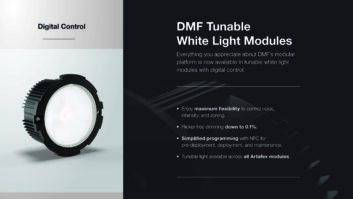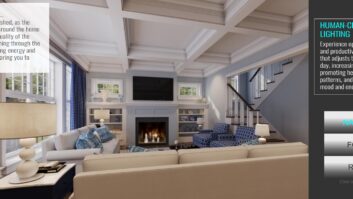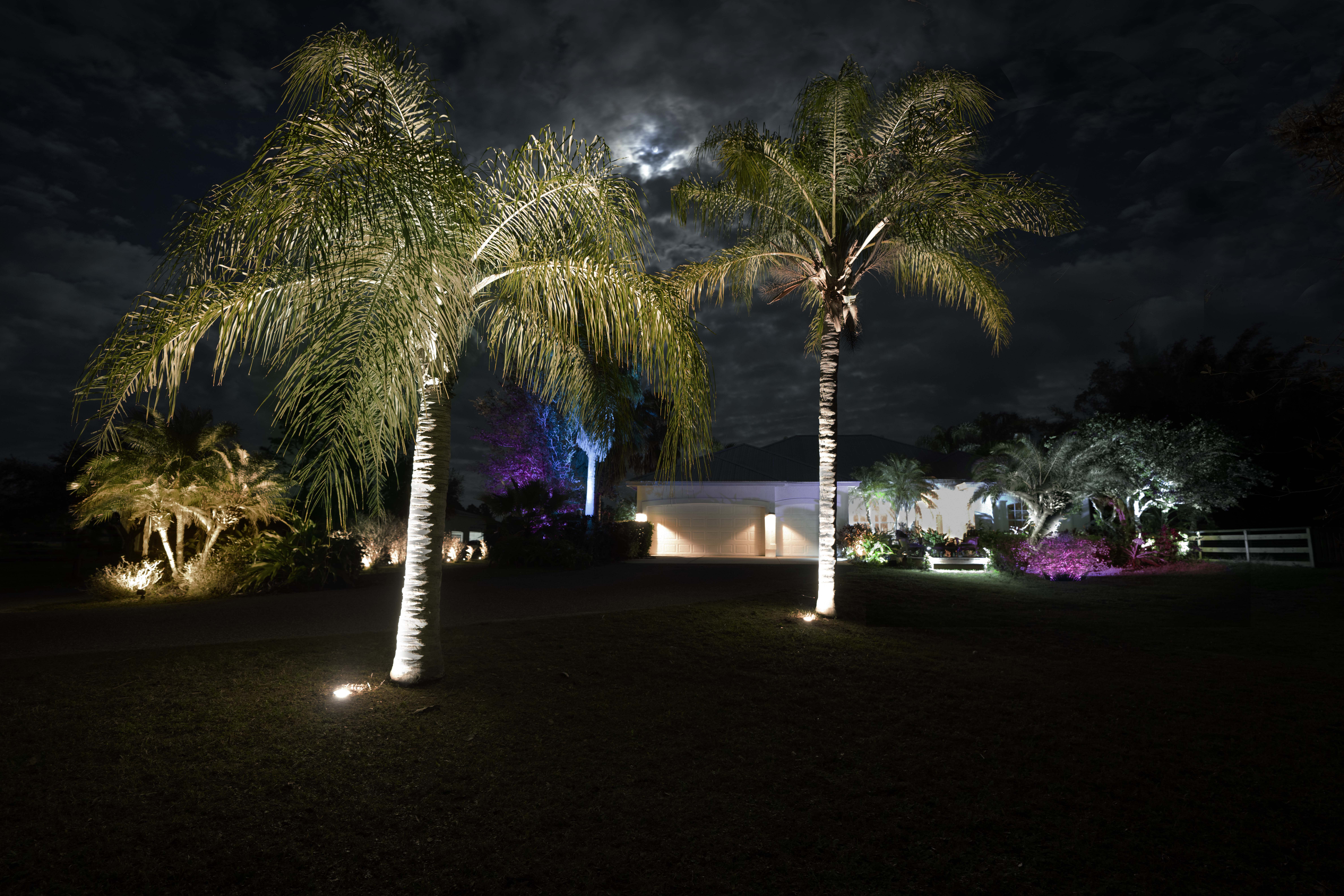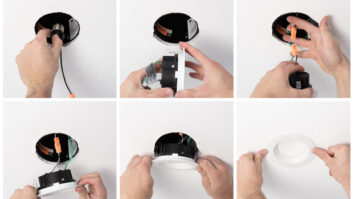LumaStream’s CEO Eric Higgs believes that LED is the future of lighting… and that a low-voltage, wired infrastructure is the future of LED lighting in homes. His company’s patented system pairs a low-voltage system with higher quality LED fixtures in a way that he said is unlike any other solution on the market, solving the issues that high-voltage electrical systems have created for their new, low-voltage counterparts.
Back in 2009, after the Great Recession sent the Silicon Valley tech entrepreneur home to St. Petersburg, FL, and back to his other career as a sculptor, Higgs was hired to design an exterior light sculpture for a parking structure being built in downtown Tampa. His design would fill a city block with sculpted light, but would require metal halide fixtures that consumed more than 20,000 watts per day. Always interested in energy efficiency and new technology, Higgs searched for more efficient, affordable, and aesthetically appropriate alternatives. He and a colleague at the time came to the realization that the current state of the art placed modern, low-voltage LED fixtures on a 130-year-old, high-voltage AC infrastructure, requiring each fixture to have complicated electronics onboard to perform the power conversion from AC to DC.
LumaStream’s CEO Eric Higgs
The LED chip that fits inside LumaStream’s light fixture
The aluminum LumaStream light fixture
Assembled fixtures on display at local integrator Easy Living with Technology
“It doesn’t make sense to put a tiny fixture that use a little bit of wattage on a high-voltage, heavy copper infrastructure,” he explained during a recent tour of LumaStream’s headquarter and manufacturing facility in downtown St. Petersburg. “The fixtures weren’t living as long as they claimed. Not even close. The electronics were getting heated up, and it was causing premature failure. If you open up an LED bulb, there’s a ton of electronics doing power conversion, and that creates heat. Not only does this cause the device to fail prematurely, but it also affects light quality.”
The quality of the light will shift over time, Higgs explained, starting out maybe as nice warm light, but then cooling in color temperature over time. Eventually, the fixture goes out, and when you put a new one in, it doesn’t match the others still in the system.
“It wasn’t really a rocket-science concept to want to create a low-voltage DC infrastructure for a low-voltage DC product, but it’s not that easy to get there technologically,” he said.
The first idea was to eliminate electronics from the fixtures, so there would be nothing in the fixture to fail. “We knew that it would maintain light quality over time and that the LEDs themselves would reach their full useful life, which would be 10 to 20 years,” he said.
And by moving to a DC system, the labor to put in a high-voltage infrastructure and all of that heavy, expensive copper would no longer be needed and the fire risk of high-voltage would be eliminated.
The other benefit of removing electronics from the fixture was that the variables that caused flicker to occur during dimming (especially over longer distances where the voltages could get “dirty”) would be eliminated, and the dimming would be much smoother.
“We basically went out to tackle the biggest technology problems in the industry, and we have. Our engineers have successfully solved all of those,” Higgs said. “I felt that it was important to create a turnkey system that works, so that the power was matched properly with the voltage and amperage requirements for an LED array, so you’re not overdriving it or under-driving it. You’re getting optimal performance all the time, which means consistent quality and longevity. By having the right power match the right fixtures in the system, that just solves every problem.”
After several years of R&D, proof-of-concept installations in local restaurants, national chain stores, hundreds of MRI suites, and even a leading electric car showroom that cannot be named here, Higgs and his 33-employee company have turned their full attention toward the custom integration channel, where he believes the most potential lies for LumaStream in high-end homes. The company thinks residential systems dealers are ready to evolve beyond the control system programming side of lighting and into the design and installation of the lighting infrastructure and fixtures. And if the entire system is DC low-voltage, then they don’t always have to bring in their line-voltage electrician partners to do that part of the work. Even better, because the company’s system doesn’t require a proprietary control system, existing lighting control partnerships can remain in place.
“Our preference was to go through the AV integrator network,” Higgs said. “We write the API communication protocols for their control system of choice.”
LumaStream launched its UL-listed products into the resi channel at CEDIA 2016 and is gaining momentum with dealers. The company is partnering with rep firms throughout the country, and is “casting the net really wide” in forming dealer-direct partnerships.
“We’ve had some of our top-performing dealers say that they’re going to double their revenue this year with LumaStream,” Higgs said. “What was surprising was that they’re coming back saying, ‘Hey, not everybody needs an expensive AV system, but everybody needs lights.’ So they’re using LumaStream to get into projects and once they’re in, they’re selling AV systems.”
The company recently joined its first buying group, Azione Unlimited, after seeing all of the chatter about lighting from other buying groups in the channel.
LumaStream continues to develop its training programs, relying mostly on webinars led by VP of marketing Heather Evereth to help dealers better understand how to spec and design lighting plans. An affordable lighting industry software package called DIAlux enables integrators to design everything but the most complicated systems, and the company partners with a network of experienced designers to assist on trickier projects, or to help new dealers get started.
“Our introductory webinar lasts an hour. If they want to spend the time with the software after that, it opens more doors and opportunities to give them the ability to provide a quick response and demonstrate their expertise to client,” Evereth said. “If you’re out in the field, and you have a 3D rendering on your screen of someone’s space, and they say, ‘What if we put a light over there?’ You can quickly place that light, render it, and show them what it will look like. Now, you’ve established yourself not just as an AV expert but as a lighting expert, too.”
With the understanding that recessed lighting makes up the majority of fixtures in a home, LumaStream’s lineup of products is weighted toward that style, although they also offer a select number of pendant and sconce designs.
Higgs makes sure to emphasize that LumaStream is not a PoE system, saying that those sorts of systems are more expensive and require a network administrator to switch out a fixture. Unlike PoE, LumaStream’s Class 2 system uses a variety of 18-16 AWG signal-wire configurations. And, while PoE system manufacturers streamline their fixtures somewhat by taking the driver out, they must put more electronics back in as a signal receiver for control.
“When you take one of those fixtures off, you’ve actually got to go back and program what the address of that fixture is,” he said. “With ours, you just take it off and put it on because the channel is addressed back at the [FCC Class B] remote power supply.”
For its solution, LumaStream owns 22 patents (with more to come) after just eight years in operation. Pointing out that they’re a technology company focused on power infrastructure, rather than “an LED company,” Higgs said the company manufactures all of its technology either in-house or through other partners nearby in Florida, and that parts are assembled and shipped out of its headquarters. Manufacturing in the U.S. is more expensive, but it ensures quality, he said.
“We can’t stray and become a cheaper product when we’re telling people that these lights will last 18 to 25 years,” Higgs noted. “We need to be right about that. If we start to have failures, then that reputation is tarnished.”
And, as a small, nimble company, LumaStream believes that it is able “dis-intermediate” the convoluted lighting supply chain like no other company, while providing integrators with a high-margin product that will even work with IoT control solutions of the future. If lighting is, in fact, “the next big thing,” then LumaStream wants to be a high-margin, high-revenue lighting solution that they’re qualified to install.
“It’s kinda silly,” Higgs said, “that AV integrators have been putting in lighting control systems for decades, but they haven’t been able to sell the lighting.”











